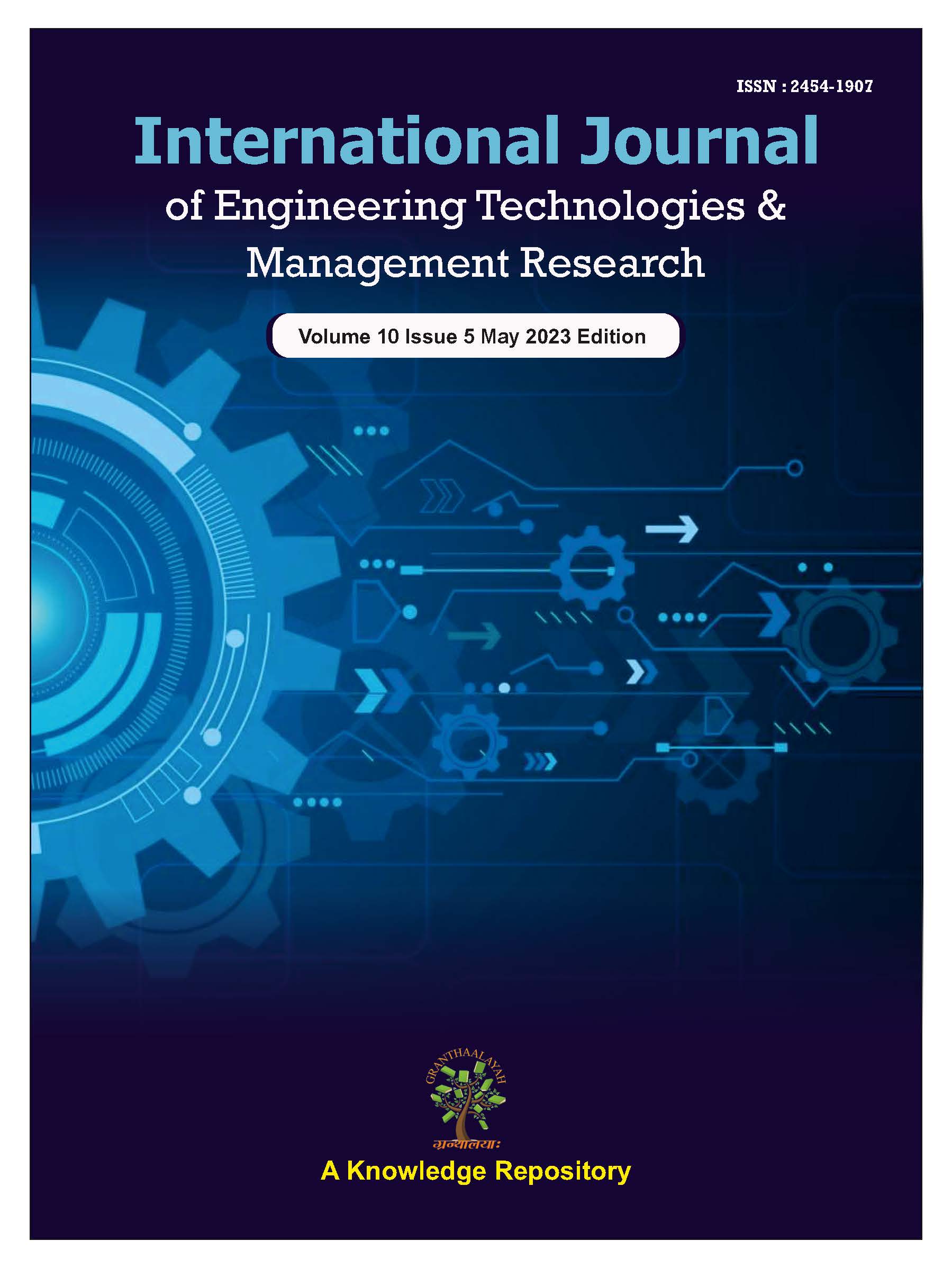SMART SECURITY SURVEILLANCE SYSTEM USING IoT FOR CRIME DETECTION
DOI:
https://doi.org/10.29121/ijetmr.v10.i5.2023.1603Keywords:
Surveillance, System, Crime Detection, Iot, Smart SecurityAbstract
With the growing need for enhanced security, traditional surveillance systems that rely on manual monitoring are no longer sufficient. Real-time, automated surveillance has become a critical area of computer vision, playing an increasingly vital role in public safety. Surveillance cameras, when paired with visible warning signs, can deter criminal activity by recording footage that assists in identifying and tracking individuals. Building on this foundation, integrating Wi-Fi-enabled IoT devices can significantly enhance system capabilities.
This project proposes a smart security surveillance system that leverages Convolutional Neural Networks (CNN) for crime detection and recognition tasks. Utilizing the ESP32-CAM module — an efficient IoT solution offering Wi-Fi connectivity and low-power communication — the system enables real-time analysis of surveillance footage. When a known individual is detected within the monitored area, the system promptly sends a notification. If an unfamiliar person or suspicious activity is detected through motion sensors and CNN-based analysis, the system issues an alert along with a captured video clip.
Downloads
References
Banerjee, T., et al. (2021). Ai-Based Video Surveillance: A Comprehensive Review. ACM Computing Surveys.
Choudhury, T., Consolvo, S. (2018). Real-Time Activity Detection With Wearable Sensors. Springer.
Das, R., et al. (2023). Smart Surveillance in Rural Areas: Challenges and Opportunities. Journal of ICT for Development.
Doyle, M. (2022). Developing Ethical AI Surveillance Frameworks. Surveillance & Society.
Expressif Systems. (2020). ESP32 Technical Reference Manual.
Gupta, S., et al. (2018). Integration of Ai in Digital Video Surveillance. Journal of Computer Vision.
Harari, E. (2016). Surveillance Ethics in the Digital Age. Ethics and Information Technology.
Jain, A., et al. (2017). Surveillance Technologies: A Historical Review. International Journal of Security Studies.
Krizhevsky, A., Sutskever, I., & Hinton, G. E. (2012). Imagenet Classification With Deep Convolutional Neural Networks. Advances in Neural Information Processing Systems (NIPS).
Krutz, R. L. (2005). Securing Scada Systems. Wiley Publishing.
Kumar, A., et al. (2021). Bias in AI Surveillance: Detection and Mitigation. AI & Society.
LeCun, Y., Bengio, Y., & Hinton, G. (2015). Deep Learning. Nature, 521, 436-444. https://doi.org/10.1038/nature14539
Lee, H., et al. (2019). Pedestrian Detection with CNNs in Smart Surveillance. IEEE Transactions on Image Processing.
Ministry of Human Resource Development, Government of India. (2018). Guidelines for School Safety.
National Crime Records Bureau (NCRB). (2020). Crime in India 2019. Ministry of Home Affairs, India.
Oyediran, O., et al. (2019). Review of Surveillance Systems. International Journal of Computer Applications.
Patel, N., et al. (2020). Real-Time AI Processing in Low-Power Environments. Embedded Systems Review.
Prasad, V., et al. (2020). Urban Crime Prevention Using Ai Surveillance. Journal of Urban Technology.
Ren, S., He, K., Girshick, R., & Sun, J. (2017). Faster R-Cnn: Towards Real-Time Object Detection. IEEE Transactions on Pattern Analysis and Machine Intelligence. https://doi.org/10.1109/TPAMI.2016.2577031
Roy, K., et al. (2020). Implementation of Iot Cameras for Low-Cost Surveillance. International Conference on IoT Applications.
Singh, P., et al. (2021). Face and Behavior Recognition In Crowds. Security and Privacy Journal.
Sundmaeker, H., Guillemin, P., Friess, P., & Woelfflé, S. (2010). Vision and Challenges for Realising the Internet of Things. CERP-IoT.
The Economic Times. (2020). Urban Crime Rates Rising Rapidly.
Thomas, B., et al. (2020). Data Security in Iot Surveillance Networks. Journal of Cybersecurity Research.
Viola, P., Jones, M. (2001). Rapid Object Detection Using A Boosted Cascade of Simple Features. Proceedings of CVPR.
Wang, L., et al. (2022). Threat Detection in Critical Infrastructure Using Smart Surveillance. International Journal of Secure Computing.
Welsh, B. C., Farrington, D. P. (2008). Effects of Closed-Circuit Television Surveillance on Crime. Campbell Systematic Reviews. https://doi.org/10.4073/csr.2008.17
Zhang, M., et al. (2019). The Role of IoT in Smart City Security. Sensors and Systems.
Published
How to Cite
Issue
Section
License
Copyright (c) 2023 Bhawna, Anupama, Gaurav, Yash Kumar, Dr. Monica Sankat

This work is licensed under a Creative Commons Attribution 4.0 International License.
License and Copyright Agreement
In submitting the manuscript to the journal, the authors certify that:
- They are authorized by their co-authors to enter into these arrangements.
- The work described has not been formally published before, except in the form of an abstract or as part of a published lecture, review, thesis, or overlay journal.
- That it is not under consideration for publication elsewhere.
- That its release has been approved by all the author(s) and by the responsible authorities – tacitly or explicitly – of the institutes where the work has been carried out.
- They secure the right to reproduce any material that has already been published or copyrighted elsewhere.
- They agree to the following license and copyright agreement.
Copyright
Authors who publish with International Journal of Engineering Technologies and Management Research agree to the following terms:
- Authors retain copyright and grant the journal right of first publication with the work simultaneously licensed under a Creative Commons Attribution License (CC BY-SA 4.0) that allows others to share the work with an acknowledgment of the work's authorship and initial publication in this journal.
- Authors can enter into separate, additional contractual arrangements for the non-exclusive distribution of the journal's published version of the work (e.g., post it to an institutional repository or edit it in a book), with an acknowledgment of its initial publication in this journal.
- Authors are permitted and encouraged to post their work online (e.g., in institutional repositories or on their website) before and during the submission process, as it can lead to productive exchanges, as well as earlier and greater citation of published work.
For More info, please visit CopyRight Section






















